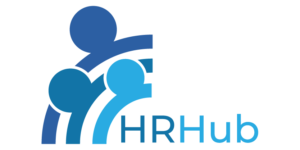Skill gaps are a growing concern for businesses worldwide, and Talent Management Software has emerged as a game-changing solution to tackle this issue. A survey by PwC reveals that 79% of CEOs are concerned about the availability of key skills in their workforce.
These gaps can hinder productivity, limit innovation, and impact organizational growth. Traditional methods of addressing these challenges often fall short in today’s dynamic work environment.
Talent Management Software integrates tools for recruitment, employee development, performance tracking, and succession planning. This comprehensive approach enables organizations to identify deficiencies and implement the necessary training to upskill their workforce effectively.
Let’s dive into seven actionable approaches that businesses can implement using TMS to address skill gaps.
1# Conducting Comprehensive Skill Assessments
Talent management software enables organizations to perform detailed assessments of employee skills.
- Automated Skill Inventories: Use TMS to maintain an up-to-date inventory of employees’ current skills and competencies.
- Gap Analysis: Compare existing skills against the skills required for current or future roles.
- Personalized Reports: Generate individual development plans tailored to employees’ unique skill gaps.
For example, a manufacturing firm can use TMS to identify which employees need training on advanced machinery, ensuring operational efficiency.
2# Enhancing Recruitment Strategies
A robust TMS integrates with applicant tracking systems to refine recruitment efforts, focusing on candidates who align with the company’s skill requirements.
- AI-Driven Insights: Analyze resumes and match candidates to job descriptions based on required skills.
- Skill-Based Screening: Implement pre-employment assessments to ensure candidates possess critical skills before hiring.
- Diversity Hiring: TMS supports inclusive recruitment by reducing unconscious bias during the screening process.
By prioritizing skill alignment during recruitment, businesses can address potential skill gaps before they arise.
3# Streamlining Employee Training and Development
One of the core functions of talent management software is creating and managing training programs tailored to individual and organizational needs.
- E-Learning Integration: Integrate online learning platforms to provide employees with on-demand access to training resources.
- Learning Paths: Develop structured training paths for employees to acquire specific skills step-by-step.
- Gamified Learning: Boost engagement through gamification, encouraging employees to complete their training goals.
For instance, an IT company can use TMS to upskill employees on the latest programming languages, ensuring they stay relevant in a competitive market.
4# Facilitating Real-Time Performance Feedback
Performance management modules in TMS help organizations provide constructive, real-time feedback.
- 360-Degree Reviews: Gather feedback from peers, managers, and subordinates to identify areas for improvement.
- Goal Tracking: Use TMS to align individual performance goals with broader organizational objectives.
- Actionable Insights: Provide employees with specific recommendations to improve their skills.
Consistent feedback not only highlights skill deficiencies but also motivates employees to take ownership of their development.
5# Promoting Internal Mobility and Succession Planning
Talent management software helps businesses identify and nurture internal talent for new roles, reducing the dependency on external hiring.
- Career Pathing: Map out potential career paths for employees based on their skills and aspirations.
- Succession Planning: Ensure leadership continuity by preparing employees to step into critical roles.
- Skill Forecasting: Predict future skill requirements and proactively prepare employees through training.
By focusing on internal mobility, organizations can address skill gaps efficiently while boosting employee morale.
6# Leveraging Data-Driven Insights
TMS provides actionable data that organizations can use to make informed decisions about workforce development.
- Predictive Analytics: Anticipate future skill requirements based on market trends and technological advancements.
- Customizable Dashboards: Gain a holistic view of skill gaps across departments and teams.
- ROI Tracking: Measure the effectiveness of training programs in addressing skill deficiencies.
With these insights, businesses can allocate resources strategically, ensuring maximum impact.
7# Encouraging Continuous Learning and Development
Talent management software fosters a culture of continuous learning, crucial for long-term success.
- Skill Certifications: Offer certifications upon completion of training programs to validate employee progress.
- Self-Paced Learning: Allow employees to learn at their convenience, accommodating different schedules and learning styles.
- Collaborative Learning: Facilitate knowledge sharing through discussion forums, mentorship programs, and peer reviews.
For example, a B2B company can encourage sales teams to regularly update their negotiation skills using TMS, resulting in higher client acquisition rates.
Conclusion
Addressing skill gaps is no longer a one-time effort but an ongoing necessity for businesses navigating today’s dynamic landscape. Talent management software provides the tools and insights needed to identify, address, and prevent skill deficiencies effectively. From recruitment to continuous learning, TMS empowers organizations to build a future-ready workforce.
Adopting these seven approaches allows businesses to unlock their employees’ potential, improve productivity, and achieve sustainable growth. Investing in robust Talent Management Software is not just a solution to skill gaps—it’s a strategic advantage in a competitive marketplace.











